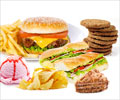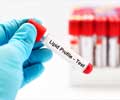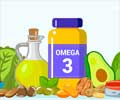Trans fats have always had a bad reputation among dietary fats. Now a new study has added fuel to the fire. The study has revealed that trans fats redistribute body fat to the abdomen contributing to create the notorious ‘apple’ body shape even when on a calorie-controlled diet.
The research was conducted by scientists at Wake Forest University Baptist Medical Center in the role of trans fats in atherosclerosis. The study was conducted on two groups of 25 monkeys, which were fed on a diet containing the same number of calories over a period of six years. One group of monkeys received 8 per cent of their dietary fat in the form of mono-unsaturated fats, while the other received 8 per cent of their fat in the form of trans fatty acids. As Professor Lawrence Rudel, head of the Lipid Sciences Research Program at Wake Forest University said, ‘We believed they couldn't get obese because we didn't give them enough calories.’Surprisingly the monkeys fed trans fats had a 7.2 per cent weight gain in comparison to 1.8 per cent in the group that was given mono-unsaturates. In addition it was found that computed tomography images revealed that the trans fat-eating monkeys deposited 30 per cent more fat in their abdomens.
The study used vervet monkeys in the experiment, which share more than 95 per cent of our DNA. Therefore it was probable that the same weight changes and fat redistribution would also occur in humans fed on a high-trans fat diet.
According to Dr Frankie Phillips registered dietician with the British Dietetic Association, ‘It is an interesting finding. Trans fats up cholesterol levels, but also, increased abdominal fat leads to insulin resistance and that combined with poor blood cholesterol levels can increase the risk of heart disease even further.’
Although UK generally consumed only one or two per cent of calorie intake from trans fats and not eight percent as in the study, other studies have shown that just a two per cent increase in energy intake from trans fats is linked to a 23 per cent increase in cases of coronary heart disease.
Trans fats are a result of vegetable oil being heated to super-high temperatures followed by bubbling of hydrogen through it, a compound that had new chemical bonds similar in structure to plastic with a high melting point and a long shelf life. Trans fats are thus generally used because they are considered to be economical.
Advertisement
In UK manufacturers are still not required by law to list the trans fats content of food. Thereby scientists advise avoiding fried foods, margarine pastries, pies, popcorn, biscuits, and any other products that contain hydrogenated oil.
Advertisement
Trans fats increase LDL cholesterol and decrease HDL cholesterol and are considered to increase the risk of coronary heart disease ten-fold more than saturated fats.











